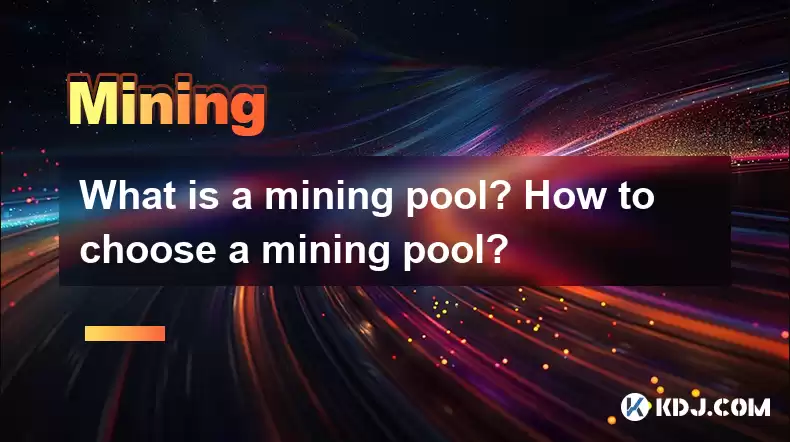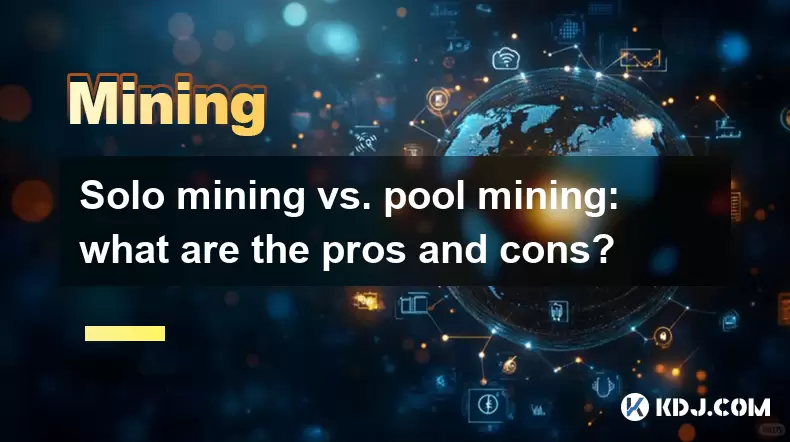-
 Bitcoin
Bitcoin $114200
0.00% -
 Ethereum
Ethereum $3637
0.56% -
 XRP
XRP $2.950
-2.01% -
 Tether USDt
Tether USDt $0.9999
0.02% -
 BNB
BNB $761.0
0.55% -
 Solana
Solana $164.1
-1.38% -
 USDC
USDC $0.9999
0.02% -
 TRON
TRON $0.3332
0.36% -
 Dogecoin
Dogecoin $0.2012
-0.52% -
 Cardano
Cardano $0.7261
-1.41% -
 Hyperliquid
Hyperliquid $37.62
-2.13% -
 Stellar
Stellar $0.3930
-2.65% -
 Sui
Sui $3.441
-0.16% -
 Bitcoin Cash
Bitcoin Cash $563.8
0.70% -
 Chainlink
Chainlink $16.50
0.09% -
 Hedera
Hedera $0.2424
-0.14% -
 Ethena USDe
Ethena USDe $1.001
0.01% -
 Avalanche
Avalanche $22.20
0.00% -
 Litecoin
Litecoin $118.0
-2.48% -
 UNUS SED LEO
UNUS SED LEO $8.991
0.12% -
 Toncoin
Toncoin $3.195
-3.87% -
 Shiba Inu
Shiba Inu $0.00001217
0.12% -
 Uniswap
Uniswap $9.674
-0.21% -
 Polkadot
Polkadot $3.633
1.00% -
 Monero
Monero $295.3
-0.82% -
 Dai
Dai $0.9999
0.00% -
 Bitget Token
Bitget Token $4.321
-0.41% -
 Cronos
Cronos $0.1392
0.73% -
 Pepe
Pepe $0.00001027
-0.89% -
 Aave
Aave $258.5
0.32%
What is a mining pool? How to choose a mining pool?
Cryptocurrency mining pools combine miners' computing power for increased block-reward chances, offering more frequent, smaller payouts compared to solo mining. Choosing a pool involves considering factors like hashrate, fees, payout system, and the pool's reputation and infrastructure.
Mar 25, 2025 at 08:29 am

What is a Mining Pool? How to Choose a Mining Pool?
A mining pool is a group of cryptocurrency miners who combine their computing power to increase their chances of successfully mining a block and earning the associated block reward. Individual miners, especially those with limited hardware, find it extremely difficult to compete against larger mining operations. Pooling resources allows for more frequent, albeit smaller, payouts. This reduces the variance in income compared to solo mining, offering a more predictable revenue stream.
How does a mining pool work? The combined hash rate of all miners in the pool is used to solve complex cryptographic puzzles. When a block is successfully mined, the reward is distributed among the pool members proportionally to their contributed hash power. This is usually done based on a pre-determined payout system, such as PPS (Pay Per Share), PPLNS (Pay Per Last N Shares), or PROP (Proportional). Each system offers different advantages and disadvantages in terms of risk and reward.
What are the different types of mining pool payout systems?
- PPS (Pay Per Share): Miners are paid for each share they submit, regardless of whether the block is found. This guarantees a steady income, but the pool operator bears the risk of not finding blocks.
- PPLNS (Pay Per Last N Shares): Miners are paid based on their contribution to the last N shares that led to a block being found. This system balances risk and reward, offering a fairer distribution while mitigating the pool operator's risk.
- PROP (Proportional): Rewards are distributed proportionally to the amount of work each miner contributed towards the block's discovery. This system is straightforward but can result in unpredictable payouts. It's also susceptible to manipulation if miners withhold their shares.
- Score-based systems: Some pools use more sophisticated score systems that combine elements of the above methods to create a fairer and more stable reward distribution.
What factors should you consider when choosing a mining pool?
- Hashrate: Choose a pool with a large hashrate to maximize your chances of earning rewards frequently. A larger hashrate indicates a higher probability of solving blocks quickly.
- Fees: Mining pools charge fees for their services. Compare fees across different pools to find one with competitive rates. High fees can significantly impact your profitability.
- Payout System: Consider your risk tolerance when choosing a payout system. PPS offers stability but higher fees, while PPLNS and PROP offer potential for higher returns but with greater variance in payouts.
- Pool Location and Infrastructure: Consider the geographic location of the pool's servers and their infrastructure. A well-maintained and geographically diverse infrastructure minimizes downtime and latency.
- Pool Transparency and Reputation: Choose a pool with a transparent operation, clear fee structure, and a good reputation within the cryptocurrency community. Look for pools that regularly publish their statistics and financial reports.
- Minimum Payout: Check the minimum payout threshold. A lower minimum payout allows you to withdraw your earnings more frequently. However, frequent withdrawals might incur higher transaction fees.
- Software and Support: Ensure the pool offers user-friendly mining software and provides reliable customer support. Good documentation and responsive support are essential for troubleshooting issues.
- Payment Methods: Check which payment methods the pool supports. Ensure it supports your preferred cryptocurrency wallet and payment method.
What are the risks associated with mining pools?
- Pool Operator Risk: There's always a risk that the pool operator might be dishonest or go bankrupt. Choose reputable and established pools to minimize this risk.
- Security Risks: Ensure the pool uses secure infrastructure and employs appropriate security measures to protect your data and prevent attacks.
- Payout Delays: While less common with reputable pools, delays in payouts can occur due to technical issues or other unforeseen circumstances.
- Centralization: Mining pools, by their nature, centralize mining power. This could potentially raise concerns about network security and decentralization.
How can I monitor my mining pool performance?
Most mining pools provide dashboards and statistics to track your mining performance. These usually include your hashrate contribution, shares submitted, earnings, and pending payouts. Regularly monitoring your performance helps you identify any potential problems and optimize your mining setup. Always verify the information provided by the pool with independent sources if possible.
What are some examples of popular mining pools?
Several popular mining pools exist, each catering to different cryptocurrencies and offering varying services. Researching different pools and comparing their features before making a decision is crucial. The choice of pool will depend on the specific cryptocurrency you're mining and your individual preferences regarding payout systems and fees. It's important to remember that the popularity of a pool doesn't necessarily guarantee its reliability or security.
Frequently Asked Questions:
Q: Is mining in a pool better than solo mining?
A: For most individuals, especially those with limited computing power, joining a mining pool is significantly more profitable and consistent than solo mining. Solo mining carries a high risk of earning nothing for extended periods.
Q: How do I join a mining pool?
A: Joining a mining pool typically involves creating an account on the pool's website and configuring your mining software to connect to the pool's servers. The specific steps vary depending on the pool and the mining software you are using. Detailed instructions are usually available on the pool's website.
Q: What happens if a mining pool shuts down?
A: If a mining pool shuts down unexpectedly, you may lose your pending payouts. Therefore, it's crucial to choose a reputable and financially stable pool to mitigate this risk. Diversifying across multiple pools can also reduce the impact of a single pool's failure.
Q: Are mining pools profitable?
A: The profitability of mining pools depends on various factors, including the cryptocurrency's price, the difficulty of mining, the pool's fees, and the cost of electricity. Thorough research and calculation of your mining costs are essential before committing to a mining pool. Profitability can fluctuate significantly.
Q: Can I switch mining pools?
A: Yes, you can usually switch mining pools at any time. However, you'll need to reconfigure your mining software to connect to the new pool's servers. Any pending payouts from your previous pool might be affected depending on its payout system.
Disclaimer:info@kdj.com
The information provided is not trading advice. kdj.com does not assume any responsibility for any investments made based on the information provided in this article. Cryptocurrencies are highly volatile and it is highly recommended that you invest with caution after thorough research!
If you believe that the content used on this website infringes your copyright, please contact us immediately (info@kdj.com) and we will delete it promptly.
- BONK, PENGU, and Cold Wallet: What's Hot and What's Not in Crypto Right Now
- 2025-08-07 00:30:32
- Mantle Rockets, WeWake Presale: Chasing 100x Potential in Web3
- 2025-08-07 01:13:45
- Solana Price and the Rise of Remittix: Revolutionizing Crypto Payments
- 2025-08-07 01:13:45
- BlockSack (BSACK): The Base Meme Coin Taking Over the Chain
- 2025-08-07 00:30:32
- Ethereum, Transaction Volumes, and SEC Staking: Navigating the Regulatory Landscape
- 2025-08-06 22:30:13
- Crypto, Tokens, and Metrics: Navigating the New Frontier
- 2025-08-06 23:09:22
Related knowledge

What are the differences between mining on Windows vs. Linux?
Aug 06,2025 at 11:29pm
Overview of Cryptocurrency Mining PlatformsCryptocurrency mining involves using computational power to solve complex cryptographic puzzles and validat...

Can you mine cryptocurrency using solar power?
Aug 07,2025 at 12:00am
Understanding the Basics of Cryptocurrency MiningCryptocurrency mining involves validating transactions on a blockchain network by solving complex cry...

How to build a mining rig inside a PC case?
Aug 06,2025 at 11:01pm
Understanding the Basics of a Mining Rig in a PC CaseBuilding a mining rig inside a PC case involves transforming a standard computer chassis into a d...

How to set up a mining farm with multiple rigs?
Aug 07,2025 at 12:38am
Understanding the Basics of a Multi-Rig Mining FarmSetting up a mining farm with multiple rigs begins with understanding the core components involved ...

How to use a server PSU for a crypto mining rig?
Aug 06,2025 at 08:39pm
Understanding Server PSUs and Their Relevance to Crypto MiningCrypto mining rigs demand stable, high-wattage power supplies to run multiple GPUs effic...

Solo mining vs. pool mining: what are the pros and cons?
Aug 06,2025 at 08:15pm
Understanding Solo Mining in CryptocurrencySolo mining refers to the process where an individual miner attempts to solve a block on their own without ...

What are the differences between mining on Windows vs. Linux?
Aug 06,2025 at 11:29pm
Overview of Cryptocurrency Mining PlatformsCryptocurrency mining involves using computational power to solve complex cryptographic puzzles and validat...

Can you mine cryptocurrency using solar power?
Aug 07,2025 at 12:00am
Understanding the Basics of Cryptocurrency MiningCryptocurrency mining involves validating transactions on a blockchain network by solving complex cry...

How to build a mining rig inside a PC case?
Aug 06,2025 at 11:01pm
Understanding the Basics of a Mining Rig in a PC CaseBuilding a mining rig inside a PC case involves transforming a standard computer chassis into a d...

How to set up a mining farm with multiple rigs?
Aug 07,2025 at 12:38am
Understanding the Basics of a Multi-Rig Mining FarmSetting up a mining farm with multiple rigs begins with understanding the core components involved ...

How to use a server PSU for a crypto mining rig?
Aug 06,2025 at 08:39pm
Understanding Server PSUs and Their Relevance to Crypto MiningCrypto mining rigs demand stable, high-wattage power supplies to run multiple GPUs effic...

Solo mining vs. pool mining: what are the pros and cons?
Aug 06,2025 at 08:15pm
Understanding Solo Mining in CryptocurrencySolo mining refers to the process where an individual miner attempts to solve a block on their own without ...
See all articles

























































































